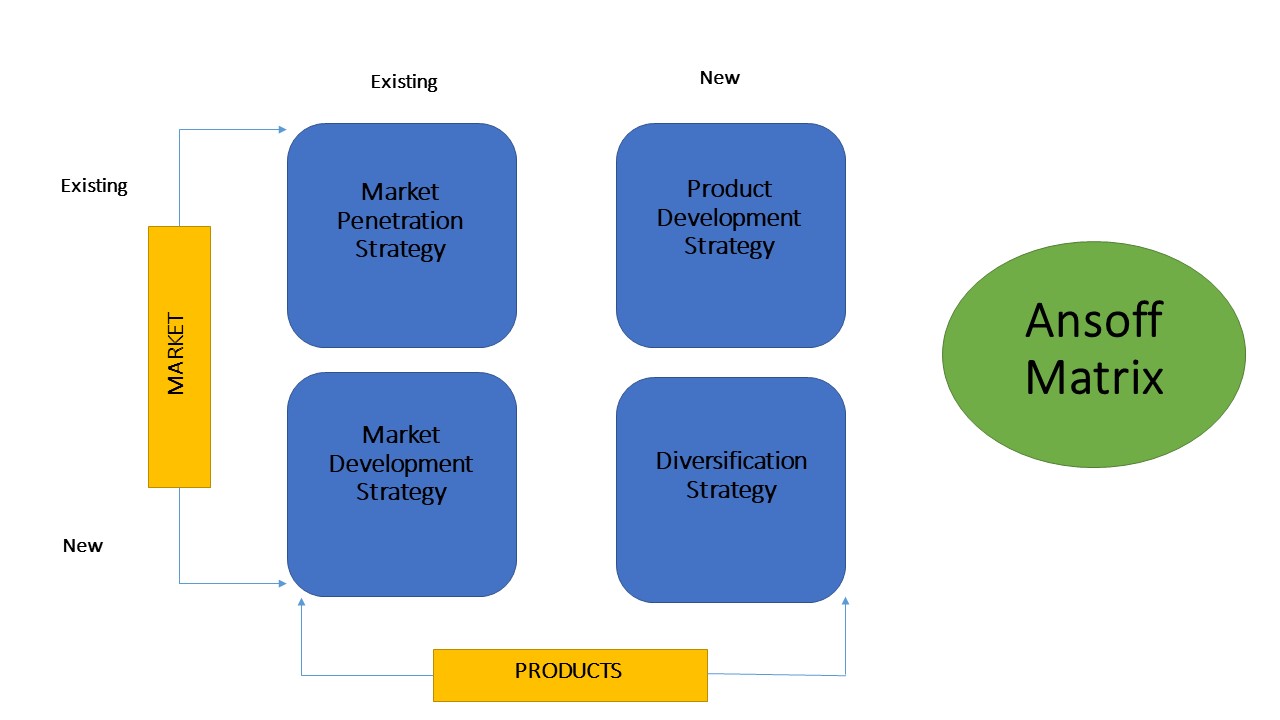Understanding corporate strategy theory through the lens of Igor Ansoff
Article Date | 7 December, 2021
Igor Ansoff is considered the father of strategic management. He was a significant thinker who systemised how people consider business strategy. Other strategic thinkers have followed him while others have argued against him. Ansoff’s book Corporate Strategy (Ansoff et al., 2019) laid the foundation for the subject of business strategy while setting academic direction for his career. He came up with the notion that strategic planning could be tackled in a precise way using different practical instruments. The most popular of these instruments is the namesake Ansoff Matrix (Ansoff et al. 2019). He founded this 2x2 matrix in 1957, where he first published it in a paper.

The Ansoff Matrix is a marketing instrument that helps a business determine its market and product growth. The Matrix provides a simple tool for evaluating four growth strategies. This is always established by determining whether the market and the product are new or existing (Martinet, 2010). The 2x2 matrix concentrates on market penetration, product development, market development, and market/product diversification.
When we consider market penetration, it always covers the products available in the already existing market. In market penetration, the product can further be exploited without altering the outlook of the product. This can be achieved by using various promotional methods, putting different pricing policies that may entice more customers, or the company can make distribution more comprehensive. In this the involved risk in its marketing strategies is always the least because the product and the established markets are already familiar to the client.
The second growth strategy is product development. This strategy involves the introduction of new products into the existing market. This can be achieved by modifying the existing product to change its presentation and outlook, thus enhancing its quality and performance. By so doing, it can entice more customers to the already existing market.
Further, market extension/development is another significant marketing strategy that ensures the growth of a business. In this strategy, the organisation sells its already existing products to a new market. This can be achieved by further market segmentation to help in identifying a new customer base. Through this strategy, the firm will assume the existing market has been fully exploited, creating the need to venture into new markets. This can be achieved in many ways, such as the development of new distribution channels (Martinet, 2010).
The final growth strategy is diversification. The strategy involves a company selling or marketing new products in both new and existing markets. It is considered the riskiest strategy since it entails two unknowns, a new product being developed, and the business does not understand the challenges that may arise in the process. Also, the business targets a new market which may lead to challenges of having unknown characteristics.
Igor Ansoff presented many new ideas, two of which became common to management. The first concept he introduced is the synergy concept. Ansoff describes synergy as 2 + 2 = 5. As such, he claims that the whole is greater than just the sum of the part (Martinet, 2010). The concept requires an assessment of how opportunities may fit in the fundamental capacities of the company. Another idea introduced by Ansoff was gap analysis. This is the concept used by the companies to determine where they are and where they want to get to. After determining their position, the company then identifies what it needs to bridge the gap.
The main problem Ansoff discovered was that his extensive kit of strategic thinking and decision-making instruments and his emphasis on rationality were directing managers and supervisors into paralysis of analysis. This is another coinage that has become common in workplaces. Ansoff devoted his time and efforts to understand why this paralysis was happening and how it could be oppressed. In doing so, he effectively became his own most ardent critic. As a result, he shifted to Strategic Management from Corporate Strategy (Ansoff et al., 2019). Strategic management is all about understanding how individuals strategically behave.
In his later investigations, Ansoff supported most of his hypotheses with robust empirical findings. Often Ansoff stayed close to working business managers, and most of his students were conducting studies into what he termed his Strategic Success Hypothesis. This stated that organizations could enhance their profits by aligning their strategic activities to the changing milieu. Also, he emphasised that by developing internal capabilities and structures to support the business strategy, the organisation could optimise its profits. Thus, he encouraged many leaders to align their strategic activities to the changing environments to ensure growth in the company.
References
- Ansoff, H. I., Kipley, D., Lewis, A. O., Helm-Stevens, R., & Ansoff, R. (2019). From Strategic Planning to Strategic Management. In Implanting Strategic Management (pp. 41-52). Palgrave Macmillan, Cham.
- Carroll, A. B. (2021). Corporate social responsibility (CSR) and the COVID-19 pandemic: organizational and managerial implications. Journal of Strategy and Management.
- Martinet, A. C. (2010). Strategic planning, strategic management, strategic foresight: The seminal work of H. Igor Ansoff. Technological Forecasting and Social Change, 77(9), 1485-1487.
How to reference this article:
Abudawood, B. (2021). Understanding corporate strategy theory through the lens of Igor Ansoff. Available at: https://www.lsst.ac/blogs/ansoff [Add article accessed date here].
Sharing is caring!





Dear Ben,
Thank you very much for posting this blog. Very informative. It will be really helpful for Level 4 , Principal of Marketing Module.
In the assignment 2, students need to apply Ansoff growth strategy .